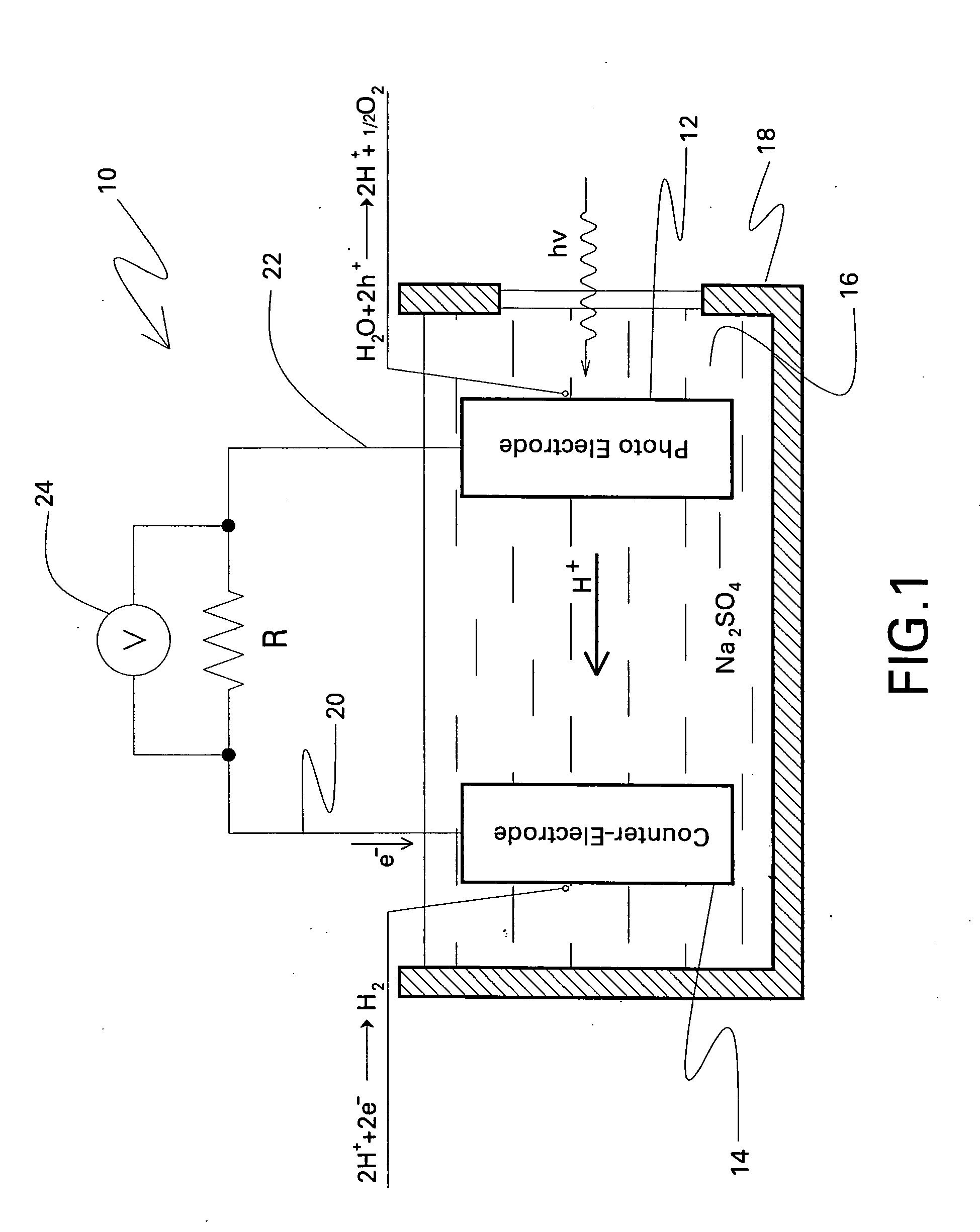Photoelectrolysis cells, and related devices and processes
a photoelectrolysis and cell technology, applied in the field of photoelectrolysis cells, can solve the problems of inability to meet the needs of photoelectrolysis technology,
- Summary
- Abstract
- Description
- Claims
- Application Information
AI Technical Summary
Benefits of technology
Problems solved by technology
Method used
Image
Examples
Embodiment Construction
[0022] The photoelectrolysis cell of the present invention can assume a number of structural configurations. Photoelectrolytic cells are described in many references. Non-limiting examples include U.S. Pat. No. 4,090,933 (Nozik) and U.S. Pat. No. 4,172,925 (Chen et al), which are both incorporated herein by reference. Typically, the photoelectrolysis cell includes a photoelectrode and a counter-electrode, which can be connected to each other in various ways. For example, each electrode could be partially or fully immersed in a liquid electrolyte, and spaced from the other. The electrodes could also be incorporated into a conventional electrical circuit with suitable conductors, as depicted in FIG. 1 (discussed below).
[0023] However, other conventional electrode structures are also possible. For example, the photoelectrode and the counter-electrode could be physically attached to each other, e.g., without the need for wire connections between them. In some cases, the photoelectrode ...
PUM
| Property | Measurement | Unit |
|---|---|---|
| bandgap energy | aaaaa | aaaaa |
| pH | aaaaa | aaaaa |
| transparent | aaaaa | aaaaa |
Abstract
Description
Claims
Application Information
 Login to View More
Login to View More - R&D
- Intellectual Property
- Life Sciences
- Materials
- Tech Scout
- Unparalleled Data Quality
- Higher Quality Content
- 60% Fewer Hallucinations
Browse by: Latest US Patents, China's latest patents, Technical Efficacy Thesaurus, Application Domain, Technology Topic, Popular Technical Reports.
© 2025 PatSnap. All rights reserved.Legal|Privacy policy|Modern Slavery Act Transparency Statement|Sitemap|About US| Contact US: help@patsnap.com


